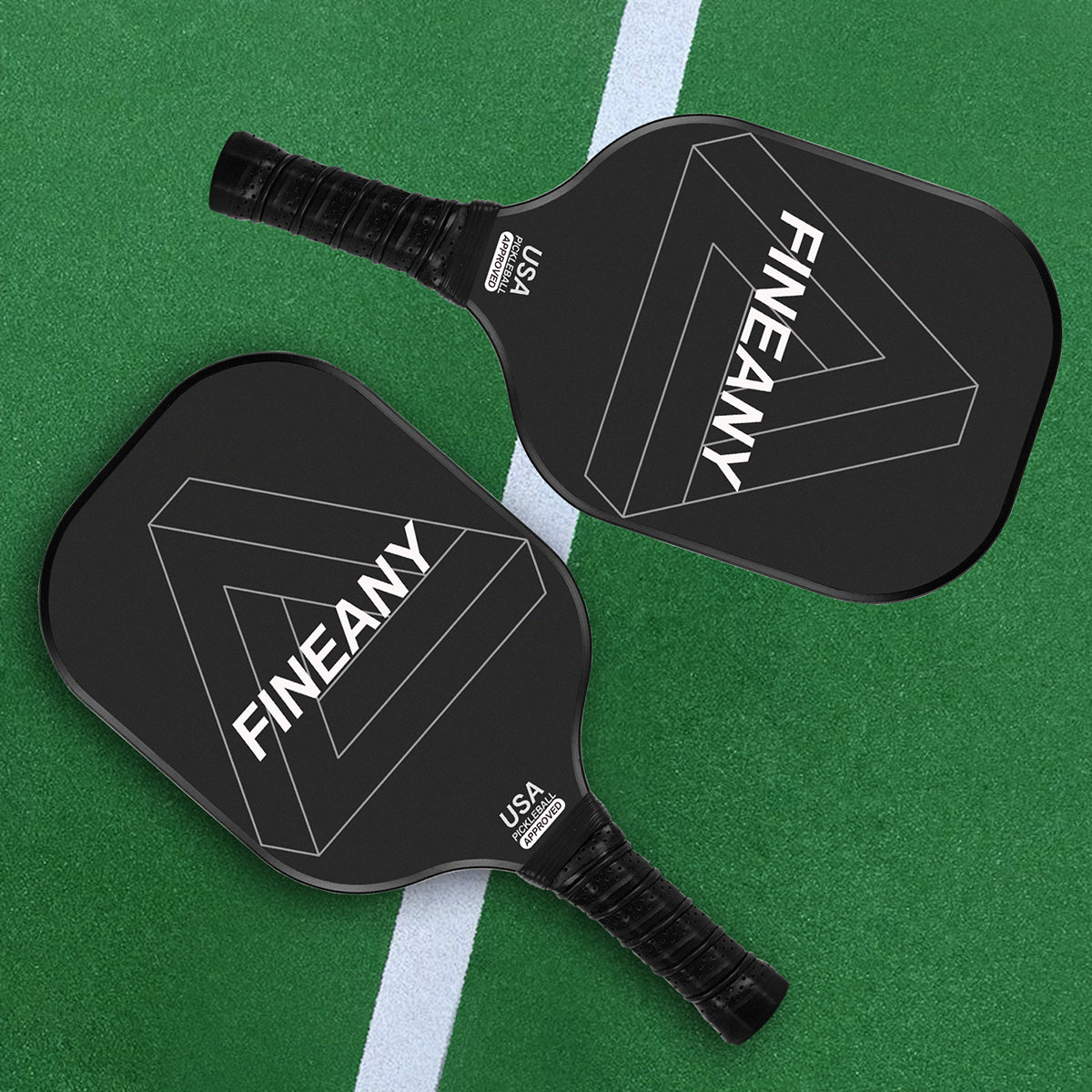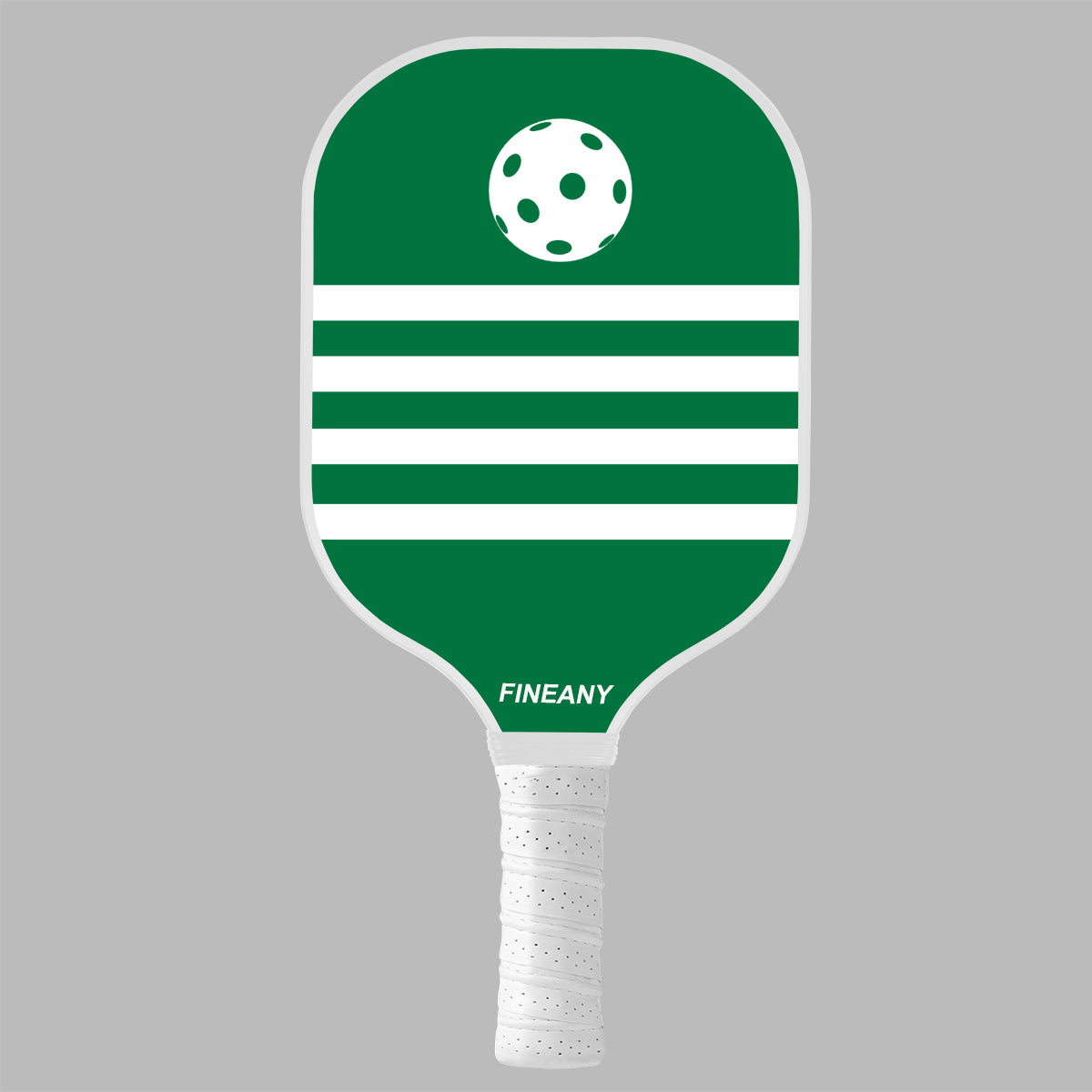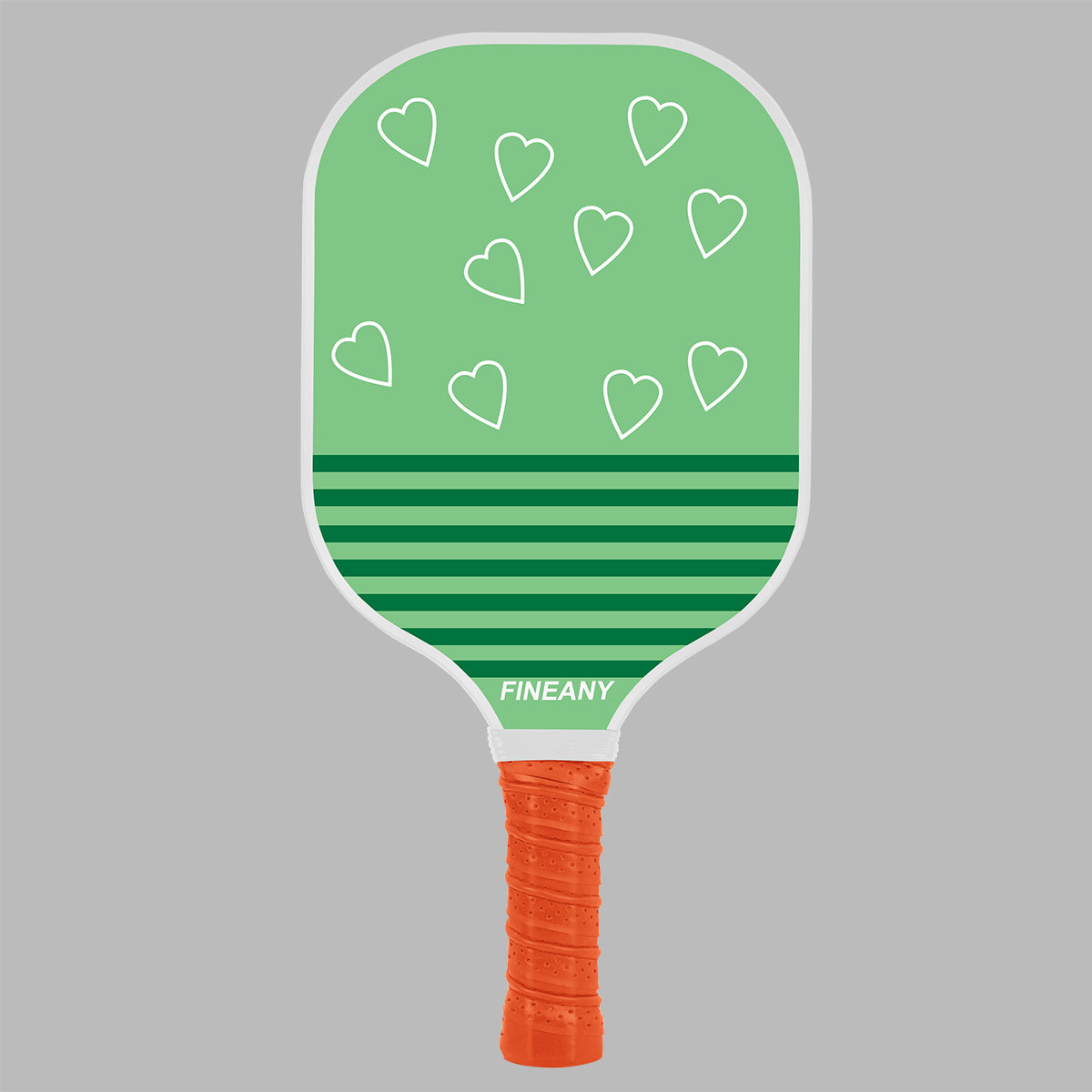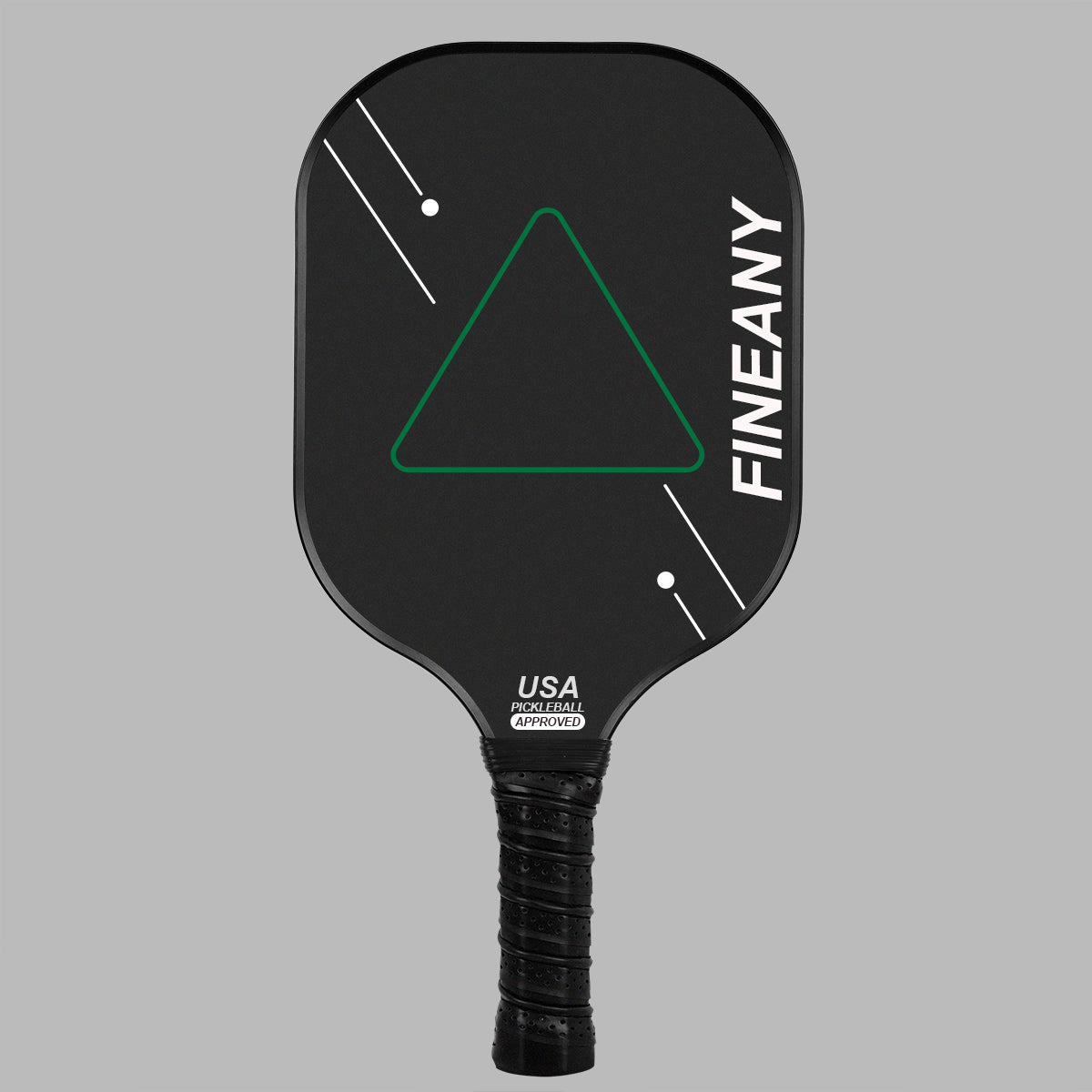In recent years, a large number of pique racket makers have moved to using carbon fiber and Kevlar (Kevlar) hybrid face materials. What is the reason behind this trend? The simple answer could be that there is a “fear of being left behind” (FOBLO) mentality because everyone is doing it. But the better answer is that this hybrid material provides more power, control and durability to the racket.
What is Kevlar?
Kevlar is a strong, heat-resistant synthetic fiber that was first commercialized in the early 1970s as a replacement for steel in racing tires. It is known for its high tensile strength and lightweight properties, and is used in a wide variety of applications where durability and impact resistance are required, such as bulletproof undershirts, aerospace materials and sports equipment. Carbon fiber, a material made up of thin, strong filaments of carbon crystals, is extremely stiff, strong and lightweight, and is widely used to make high-performance structural materials.
What are the types of Kevlar materials?
Kevlar 29: Kevlar 29 was one of the first Kevlar fibers to be developed and has high tensile strength and good abrasion resistance. It is mainly used in bulletproof undershirts, protective helmets and other personal protective equipment, as well as for the reinforcement of ropes and cables.
Kevlar 49: Kevlar 49 has higher tensile strength and modulus (stiffness) than Kevlar 29. It is commonly used in composites that require high strength and stiffness, such as aerospace, marine, racing components and high-performance sports equipment.
Kevlar K149: Kevlar 149 has an extremely high modulus (stiffness) and is the stiffest of all Kevlar types. It is used in applications requiring very high stiffness, such as advanced composites, fiber optic cable reinforcements, and specialty textiles.
Kevlar AP: With 15% higher tensile strength than K-29, Kevlar AP offers improved processability and higher strength. Suitable for a wide range of industrial applications, including textiles, composites and rubber products.
Kevlar XP: A combination of lighter weight resins and KM2 plus fibers, Kevlar XP provides higher impact resistance and better energy absorption. It is primarily used in the manufacture of high-performance ballistic and puncture resistant equipment, such as body armor and protective panels.
Kevlar KM2: Specifically designed for military and tactical applications, Kevlar KM2 has excellent impact and ballistic properties and is used in the manufacture of ballistic helmets, protective undershirts and protective gear for armored vehicles.
What are the advantages of Kevlar in a pique racquet?
Strength and rigidity: Carbon fiber is known for its superior strength and rigidity, while Kevlar further enhances the overall strength of the hybrid fiber, providing good impact resistance and energy absorption. This combination allows the racquet to respond effectively to impact while maintaining high strength and stiffness.
Lightweight: Carbon fiber and Kevlar are both lightweight materials, and the blend minimizes the weight of the racquet while maintaining high strength and stiffness. This design not only improves the handling of the racket, but also improves maneuverability and provides a higher strength-to-weight ratio.
Impact Resistance: Kevlar fiber has excellent impact resistance, absorbing energy and reducing vibration. Combined with carbon fiber, the racquet's impact resistance is improved, making it ideal for applications that require high strength and impact resistance, such as sports equipment and protective gear.
Shock Absorption: The inherent dampening properties of Kevlar fiber reduce vibration in the composite structure, enhancing comfort during play. This dampening effect improves the overall feel of the racquet and reduces the impact on the hands.
Durability: Kevlar is extremely durable and abrasion-resistant, able to withstand repeated impacts and rough use, making the racquet long-lasting. Combined with Carbon Fiber, the durability of the racquet is further increased, allowing it to hold up well after extended use and withstand even more impact and wear and tear.
Power and Control: The stiffness and strength of Kevlar fibers contribute to power and control, allowing players to hit the ball with more force while maintaining accuracy. Carbon fiber, on the other hand, provides superior stiffness, allowing the racquet to transmit more power to the ball and maintain precise control. The blend provides a significant improvement in the overall performance of the racquet, combining the benefits of both materials.
Consistency: Kevlar racquets provide consistent performance over long periods of time because they do not degrade quickly with use. This consistency ensures that the racket performs reliably and is suitable for long term playing needs.
Construction of Kevlar Pico racquets
Kevlar is often used in conjunction with other materials in the core of the racket, such as polymer, aluminum or Nomex honeycomb. Each of these core materials offers different performance characteristics: the polymer core provides good flexibility and shock absorption, contributing to comfort and control when hitting the ball; the aluminum core enhances the structural stability and strength of the racquet for applications that require extra rigidity; and the Nomex honeycomb core provides excellent strength and lightweighting, as well as excellent impact resistance to better absorb and disperse impact. Combining Kevlar with these core materials significantly improves the overall performance of the racket, ensuring greater strength, stability and durability.
In terms of surface layers, Kevlar can be used as the outer layer of the racket or woven into the composite material of the racket. When used as a surface layer, Kevlar provides additional protection against wear and tear, extending the life of the racket while maintaining lightness; when woven into composites, it combines the strength of Kevlar with the properties of other materials. For example, when blended with carbon fiber, it further enhances the rigidity and strength of the racket while providing excellent impact resistance and shock absorption. This construction method ensures that the racket remains lightweight, durable and comfortable while providing superior strength and control.
Carbon Fiber vs. Kevlar in Pickleball Rackets
The benefits of carbon fiber racquets include extreme strength and rigidity, which allows the racquet to provide greater hitting power and control. The lightweight nature of carbon fiber also makes the racquet easier to handle and improves maneuverability. Additionally, carbon fiber racquets provide a stable feel when hitting the ball, which aids in precise control, as well as a high level of durability and fatigue resistance, which allows them to perform well for long periods of time. However, carbon fiber has lower impact resistance and may be more prone to breakage under severe impact, and there is more vibration transfer, which may affect feel and comfort. In addition, carbon fiber materials and manufacturing processes are more costly, resulting in more expensive racquets.
The benefits of Kevlar racquets are its excellent impact resistance, better energy absorption and vibration reduction, providing a more comfortable feel, and its inherent dampening properties that help to minimize vibration on impact and enhance comfort. Kevlar is also extremely durable and resistant to wear and tear, can withstand multiple hits and rough use, and is lightweight, making the racquet easy to control and maneuver.Kevlar racquets are consistent in their performance and remain stable over long periods of time. However, Kevlar is not as stiff as carbon fiber and may not provide as much power on the ball. Similar to carbon fiber, Kevlar is also more costly, resulting in a more expensive racket. In addition, Kevlar has a slightly lower strength-to-weight ratio than carbon fiber.
Overall, Carbon Fiber is better in terms of strength and rigidity for applications that require more power and precise control of the ball, while Kevlar is better in terms of impact resistance and vibration dampening for applications that require greater comfort and durability. The lightweight nature of both racquets allows for good handling, but the higher price tag is a common drawback.
Conclusion:
Choosing the right material for your pickleball racquet is crucial to enhancing your game performance. Carbon fiber and Kevlar each have their own unique advantages. Carbon fiber is known for its superior strength, stiffness and lightweight properties, providing excellent hitting power and precise control. However, it lacks in impact resistance and shock absorption. Kevlar, on the other hand, excels in impact resistance and vibration dampening, absorbing energy and reducing vibration, while providing high durability. A mix of the two combines the strengths of each to provide greater strength, stability and comfort. Understanding the properties of these two materials can help players choose the racket that best suits their needs, thus enhancing their playing experience and performance.
Frequently Asked Questions
Q: What are the main differences between Carbon Fiber and Kevlar in a Pico racquet?
A: Carbon fiber is known for its superior strength and stiffness, providing greater hitting power and precise control, but it is less impact resistant and less shock absorbent. Kevlar, on the other hand, has excellent impact resistance and shock absorption properties, better absorbs energy and reduces vibration, and is very durable. The combination of the two can combine the strengths of each to provide greater strength, stability and comfort.
Q: Why did you choose a carbon fiber or Kevlar hybrid racquet?
A: Hybrid material racquets combine the benefits of carbon fiber and Kevlar. Carbon fiber provides strength and rigidity, while Kevlar enhances impact resistance and shock absorption. This combination ensures that the racquet can withstand greater impact while maintaining high performance, providing better handling and comfort.
Q: What are the advantages and disadvantages of carbon fiber racquets?
A: Advantages of carbon fiber racquets include extremely high strength and stiffness, light weight, and excellent stability and durability. However, its disadvantages include lower impact resistance and higher vibration transmission, which may affect feel and comfort. The price is also relatively high.
Q: What are the advantages of Kevlar racquets?
A: The main advantages of Kevlar racquets include excellent impact resistance, shock absorption and durability. Kevlar absorbs shock and reduces vibration, and is highly resistant to wear and tear. Although it is slightly less rigid and strong than carbon fiber, its consistent performance and comfort over time make it excellent in many applications.
Q: Which racquet material is suitable for beginners?
A: Kevlar racquets may be a better choice for beginners, as its excellent shock absorption and impact resistance provide better feel and comfort and reduce unwanted vibrations. The durability of Kevlar also means that the racquet can withstand frequent use. If more power and control is needed, consider carbon fiber racquets, but be aware of their higher price and lower vibration dampening properties.
FineAny Pickleball: Enjoy the Fun of Hitting! Play Your Best!
At FineAny Official, we are committed to providing top-quality pickleball equipment to ensure your performance on the court is impeccable. Whether you are a beginner or an experienced player, our product range can meet your needs:
Pickleball Paddles: From the affordable T300 series, the premium T700 series and the top Kevlar series, we offer a variety of materials and performance paddles to meet the needs of different players.
Pickleball Balls: High-quality balls add fun and challenge to every game.
Pickleball Bags: Stylish and practical bags designed for your equipment, keep your paddles and accessories safe and worry-free.
























Leave a comment
All comments are moderated before being published.
This site is protected by hCaptcha and the hCaptcha Privacy Policy and Terms of Service apply.